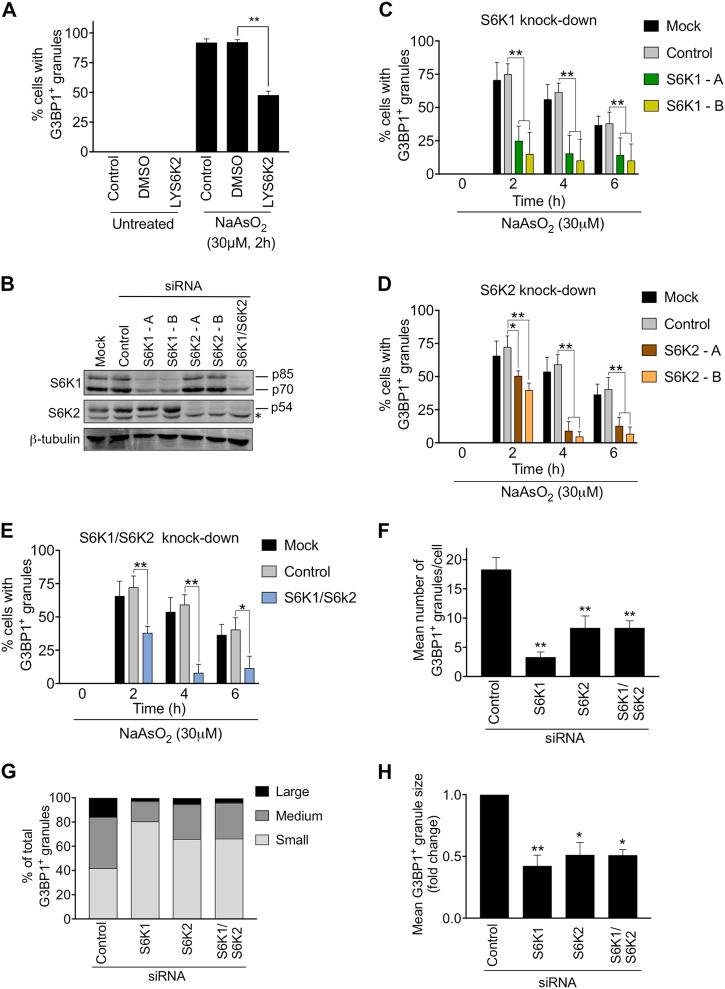Fig. 2.
S6K1 and S6K2 are required for stress granule assembly. a HeLa cells were pre-treated or not with 0.5 mM LYS6K2 for 12 h and then treated with or without 30 μΜ of NaAsO2 for 2 h. Quantification of cells with G3BP1-positive granules under the indicated conditions is presented. 100 cells were analysed in each of the 3 biological repeats. Statistical analysis was carried out using one-way Anova (**p < 0.0002). b HeLa cells were transfected with siRNAs against S6K1 and S6K2 and the levels of knockdown were confirmed via immunoblotting of cell lysates. β-tubulin levels were analysed to ensure equal loading of lysates. A non-specific band in the S6K2 blot is indicated with a star (*). c–e Quantification of cells with stress granules after treatment with 30 μΜ of NaAsO2 for the indicated times and either siRNAs against S6K1 (S6K1-A and S6K1-B), S6K2 (S6K2-A and S6K2-B) or both S6K1 and S6K2 (S6K1-B and S6K2-B). 100 cells were analysed in each of the 4 biological repeats. Error bars are s.e.m. Data were analysed using two-way Anova (*p < 0.04; **p < 0.0002). f Mean number of granules per cell in those cells that displayed stress granules after 2 h treatment with 30 μΜ of NaAsO2. g, h Analysis of the size of stress granules following siRNA knockdown of S6K1 or S6K2 in cells treated for 2 h with 30 μΜ of NaAsO2. SGs were clustered into 3 groups according to their size: small, intermediate and large (see Materials and Methods) (g). Mean granule size was also measured (h). 100 cells were analysed in each of the 3 biological repeats. For f and h, error bars are s.e.m and data were analysed using one-way Anova (*p < 0.04; **p < 0.0002)

